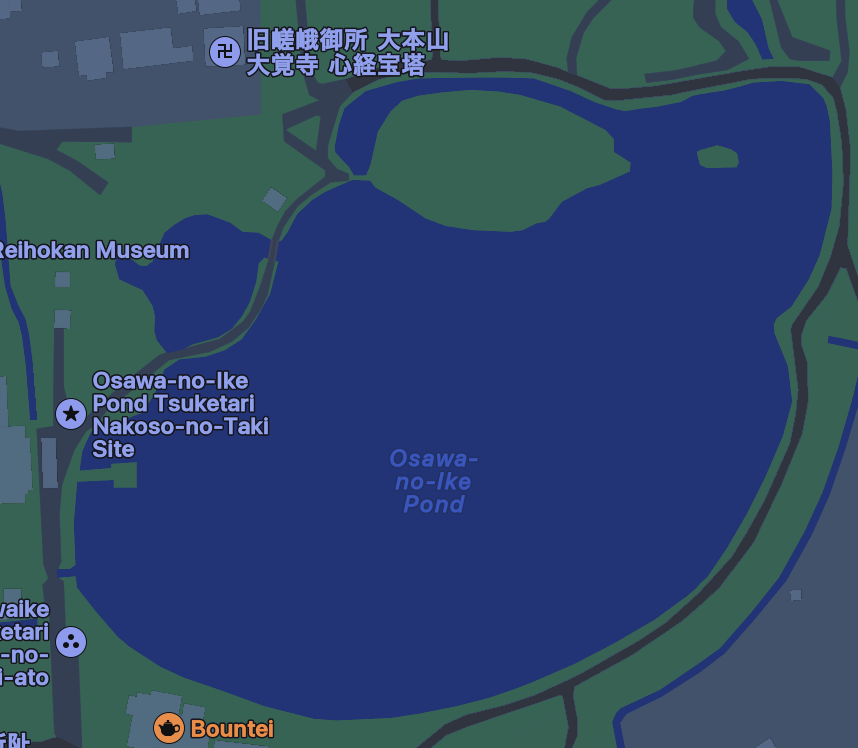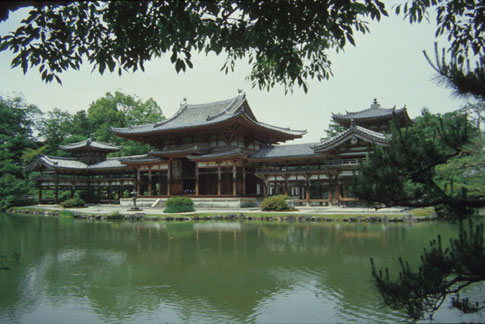
Daikaku-ji occupies the general area of a detached palace erected by the Emperor Saga (d.842). In 876, Saga's villa was converted to a Shingon Buddhist temple. None of the original buildings remains, and the specific site of the temple is not exactly that of Saga's villa, but the current structures retain the general appearance of a shinden-style residence and its associated gardens. The five-acre lake contains two islands and a number of rock formations. Choose a view point from the map or click Tour the Garden for more views of this garden.
Daikaku-ji occupies the general area of a detached palace erected by the Emperor Saga. In 876, Saga's villa was converted to a Shingon Buddhist temple. None of the original buildings remains, and the specific site of the temple is not exactly that of Saga's villa, but the current structures retain the general appearance of a shinden-style residence and its associated gardens. The covered corridors that connect the various halls and pavilions define small courtyard gardens--tsuboniwa--of the sort described in the Tale of Genji, and the large lake which the temple confronts is one of the remnants of the original estate garden. Called Osawa no ike ("Large Swampy Pond"), the five-acre lake contains two islands and a number of rock formations. It is said to have been inspired by Lake Dongding in China.

